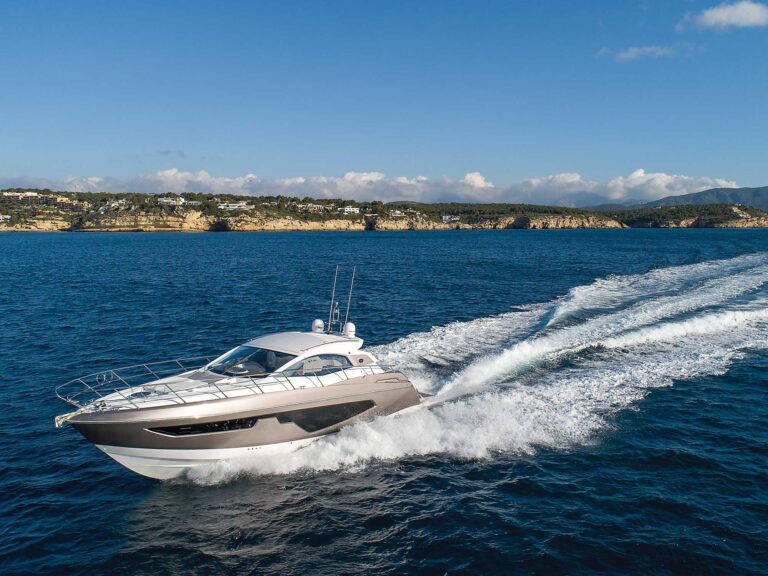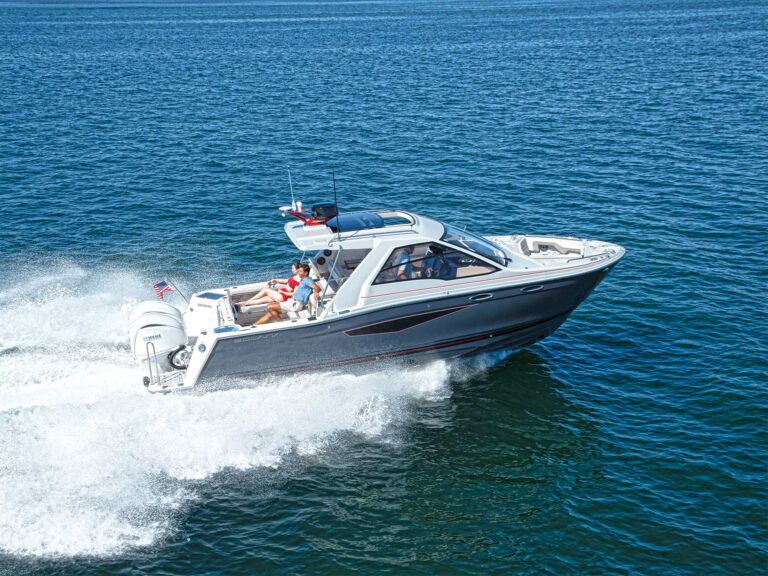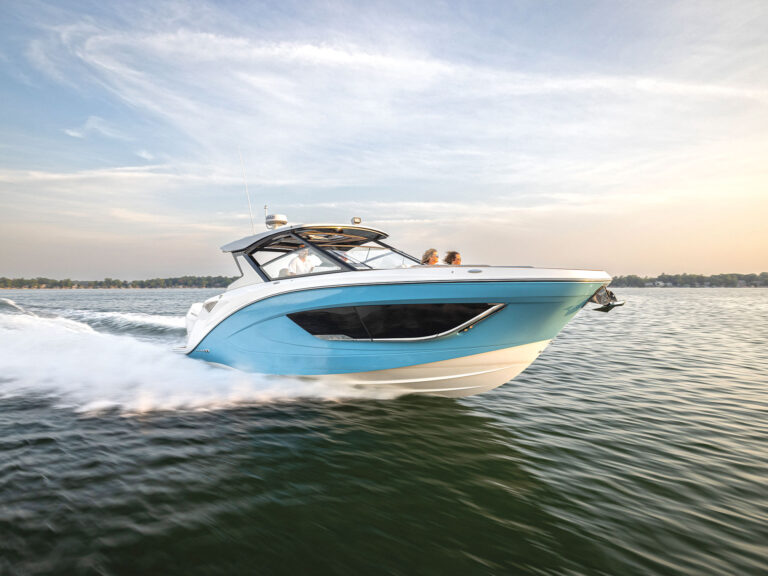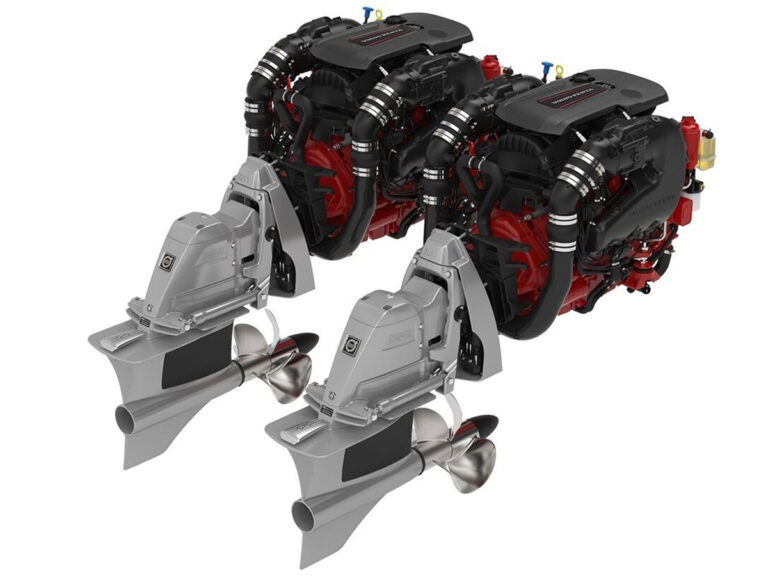Back in August, BOATING sent editor Pete McDonald up to Rhode Island on an off-shore fly-fishing mission to catch Bluefin Tuna on our summer project boat, the Angler 204FX. Behind the scenes Pete and his crew received immense help from seasoned Bluefin angler and fishing guide Capt. Mike Warecke of Old Lyme, CT.
For nearly thirty years now, Capt. Mike has been fishing the salt and fresh waters of the northeast and in his spare time – who has spare time when there are fish to be caught? – runs his own fishing business, Fishing Innovations. With an expertise in saltwater fly-fishing, Captain Mike provided great company and indispensable knowledge on Pete’s quest. Post-trip, we caught up with the Captain in a rare moment of downtime and greedily picked his brain about why he loves fishing Bluefin and more importantly, what has contributed to his success rate.
Fishboat: What is it about bluefin tuna?
Capt. Mike: I live in the northeast, but when the season is on, I fish five days a week. Striped bass are out there for eight or nine months but bluefin only for one month. It’s such a gamble.
Fishboat: So you’re in it for the challenge?
Capt. Mike: Oh, sure! Bluefin are so hard to find and it’s a short period of time when they come inshore to feed like that. It’s a big gamble to get everything to line up perfectly.
Fishboat: When is the best time to target school Bluefin tuna inshore?
Capt. Mike: The schoolie tuna show up in Rhode Island towards the end of July and stay through September. The best time to target these fish is in the 3rd week of July through August.
Fishboat: How far offshore do you typically have to run to find them?
Capt. Mike: Normally you have to travel 30 plus miles off shore to find these fish, in and around trollers. There are a couple of weeks when the nickel size bunker schools are big and tight. These bait schools are within 3 miles from shore. This brings the schoolie tuna in to feed.
Fishboat: What is your tackle of choice for fly fishing?
Capt Mike: The tackle used for these fish are 9′ 12-weight fly rods and large arbor reels with smooth drags capable of holding 250 yards of 30lb backing. The lines are full sinking and sink tip fly lines. The leaders are 6′ to 8′ long, the 40lb butt section 1′ to 2′ long and attached to the fly line with a nail knot. The next section is a 2′ long, 30lb line connected to the butt section with a loop to loop connection. The class tippet is 20lb flouracarbon connected to the 30lb section with a Bimini twist.
Fishboat: Do you think the color of bait has an effect on your success rate?
Capt. Mike: All my flies are tied in white, but the size of the bait is most important.
Fishboat: So size matters?
Capt. Mike: You could say that. The bait I use is the size of a nickel and the tuna are keyed in on that size bait.
Fishboat: On the topic of size, tell me about the largest bluefin you ever caught.
Capt. Mike: I was out on the boat by myself and I had one that was 50-60lbs! I tailed him twice, which is considered a legal catch, but after a 40 minute fight I was getting pretty tired. It’s hard to wrestle a fish like that, so I didn’t get him up, but the biggest I pulled up was 30lbs.
Fishboat: As far as the boat driver, do you prefer the run and gun method? Or do you like a driver to be slow and stealthy?
Capt. Mike: Many people will go motor up, running gun full throttle until they’re a cast distance away. What I’ve found works best is to come up quickly but slow down a nose distance from the school. This lets you get organized to get a good fly presentation into the school. Also, when a school pops up, let them come up and go back down. Then move over to the location where you thought they surfaced and hit the “mark” button on your GPS. If you sit there for a while, the fish will usually surface again right there. I think run and gunners seem to always put the school down. And always leave your engine on – the fish don’t like the change in pitch if it is suddenly silenced.
Fishboat: How do you catch them with spinning gear?
Capt. Mike: I have caught these fish on spinning tackle. 8′ to 9′ rods with a good backbone work the best. I use tin lures in chrome; the 3/4-ounce deadly dick with green tape works the best. But I have seen many guys use plastics and do just as well.
Fishboat: Why do you think you have such a high success-rate with bluefin?
Capt. Mike: The most important thing in catching these fish is casting. When a school comes up to feed, they do not stay up long. Long, accurate casts are needed to put your fly into the school of feeding fish. You need to cast 80′ from a moving boat to a moving target. Obviously the more casts you can get into the school, the better chance the tuna will eat your fly. The fly-caster and the captain need to work together for your best chances of catching schoolie Bluefin tuna.
Fishboat: Last one. Can you give our readers any more advice?
Capt. Mike: Patience. Definitely have patience. During our trip in August, we were out on the boat and one of the guys kept saying, “Go over there! No, go over there! Wait, over there!” But I say it’s better to slow down, take a look at your surroundings and really look at the big picture. It can’t be a run and gun process-you must slow down and focus.
For more information on Captain Mike’s fishing adventures, head to his website www.ctfishsaltwater.com. Out of season, Captain Mike runs his own business, Fishing Innovations (www.lockingrodholders.com), having a patent on the locking rod holder, designed for traveling fisherman. He also makes his own fly reels. Special thanks to Jeremy Cameron of Flies and Fins for shooting the video and helping to organize the trip.









